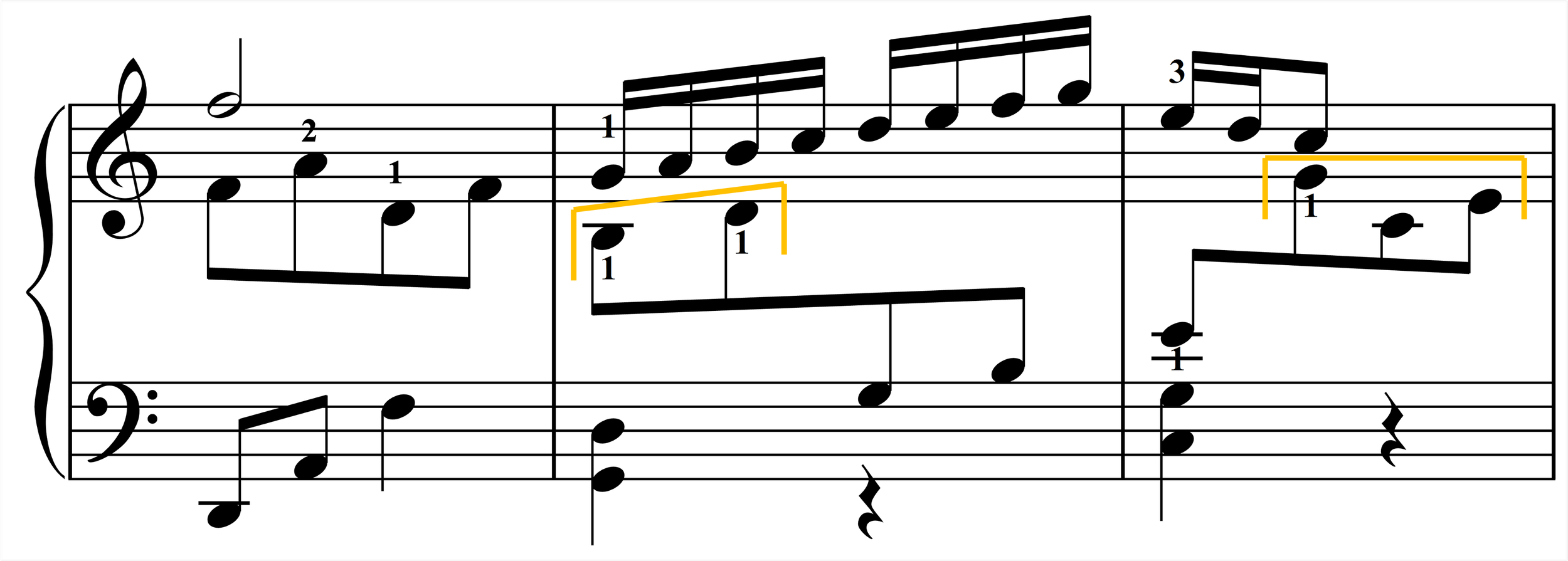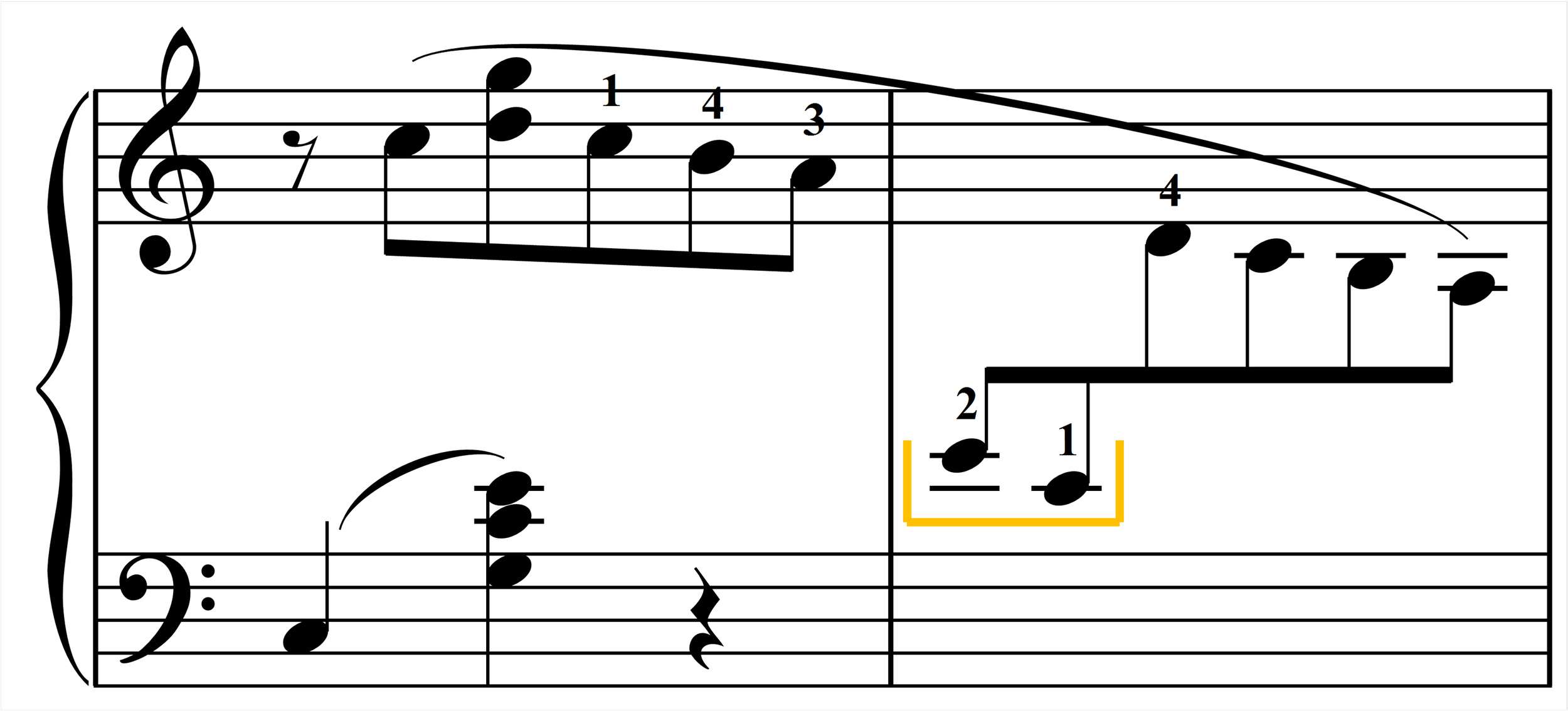Submitted by Michael Lenahan
Published on 1/21/2022

Submitted by Michael Lenahan
Published on 1/21/2022

“I like how this alternate fingering coordinates groupings in both hands. I recommend playing the last note with 1 or a fist.”
Submitted by Michael Clark
Published on 1/4/2022

“I find it easier to play the scale unencumbered by the alto notes. I play those in the left hand by quickly rolling the chord rather .”
Submitted by Michael Clark
Published on 9/2/2023

“I find dividing the end of the scale between the hands helps with speed and looks nice.”
Submitted by Michael Clark
Published on 9/8/2023

“Price clearly divides these notes between the hands, but I find it much easier to maintain evenness of sound by keeping them all in the right hand.”
Submitted by Michael Clark
Published on 10/6/2023

“Dividing the run this way helps me stay organized rhythmically and highlight the changes in register.”
Submitted by Michael Clark
Published on 9/3/2023

“This seems to be the distribution suggested by the rests and stem direction in m. 55. I play right-hand 2 and 3 in toward the fallboard with a tall wrist. I use the unusual scale fingering in m. 56 to allow the quarter note A to be held with 1.”
Submitted by Michael Clark
Published on 10/4/2020

“Taking the F in the left hand allows the right hand to use strong fingerings on the ascending triad for a more forceful delivery.”
Submitted by Michael Clark
Published 1/1/2020

Submitted by Frances Lee
Published on 3/15/2020